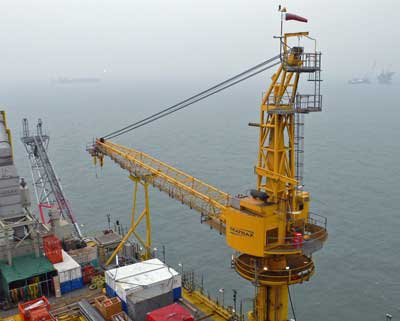
Classification society RINA is launching revised rules for offshore cranes and new standards for cranes that will be used for trans-shipment of bulk cargoes at sea.
RINA’s revised rules for offshore cranes have been based on European Standard EN 13852, which takes a different approach to commonly used offshore crane standards, said to allow for a more structured approach to offshore crane certification.
“RINA believes that there is a need in the offshore industry for a clear standard for floating cranes and cranes built onto OSVs which is based on European requirements,” said Dino Cervetto, director, technical services, RINA Services.
Under the new rules for lifting appliances, RINA has split the requirements for specific crane types (ship, offshore and trans-shipping) into free-standing sections to make the rules more user-friendly.
The new RINA rules for transhipment cranes provide for a specific notation, Cargo Handling, which takes into account both static and dynamic loads on trans-shipment cranes used on vessels transhipping bulk cargoes in open waters, and also details how these are related to structural requirements for the vessel and crane and to the operating envelope.
“There is a gap in the market for standards for transhipment cranes,” Mr Cervetto explained. “RINA’s new rules contain an operational chart which will allow operators of floating trans-shipment terminals to widen the weather window in which they can work. It also takes into account the specific wave height and orientation of the terminal.”
“Cranes certified under this new notation will be able to operate safely for longer and give more operational time to terminal operators without fear of breakdowns or overload conditions,” he added.
